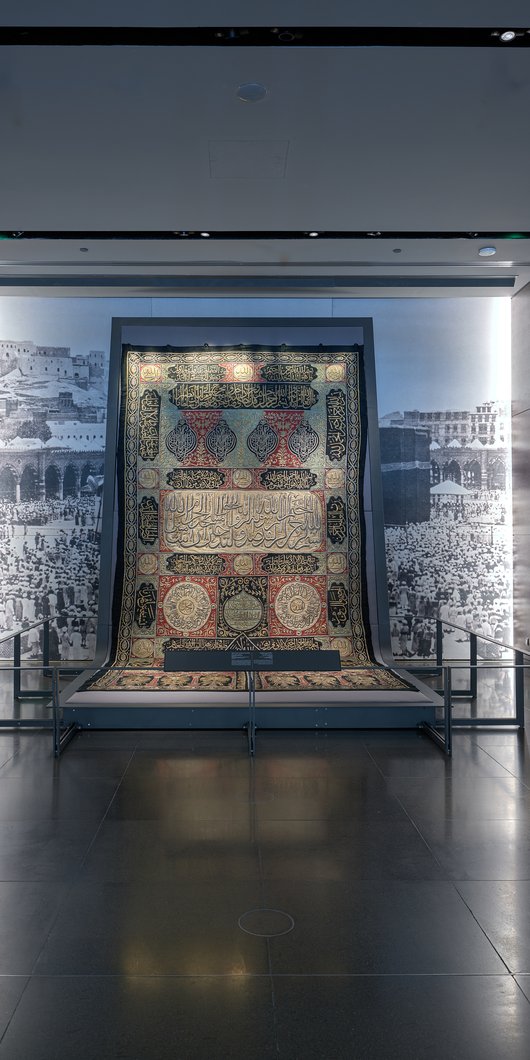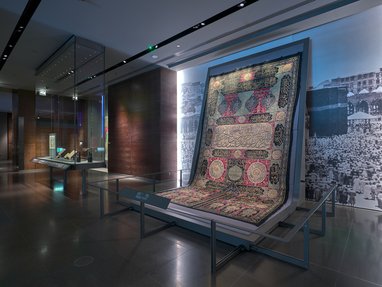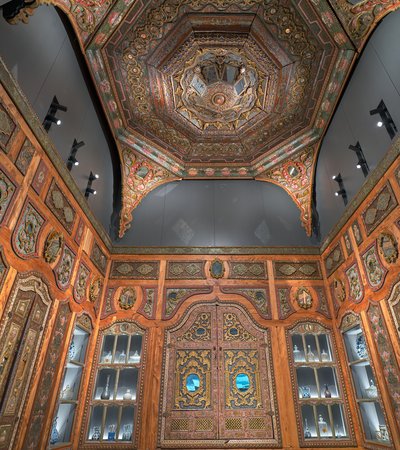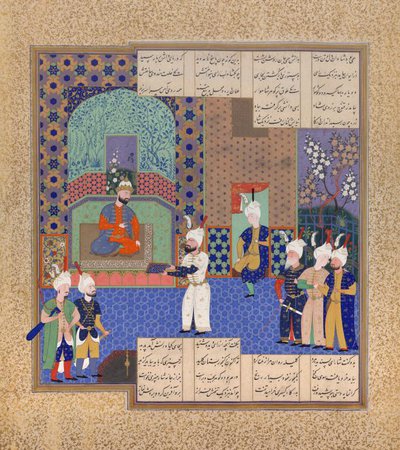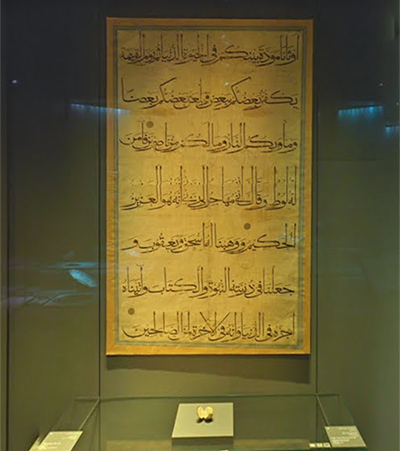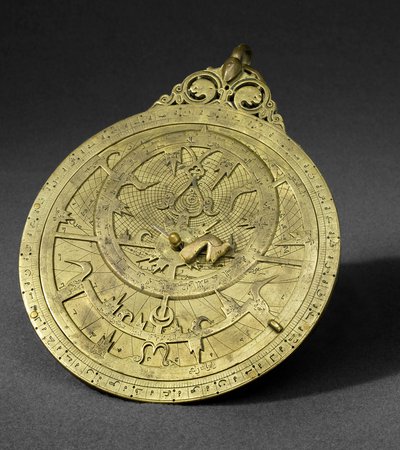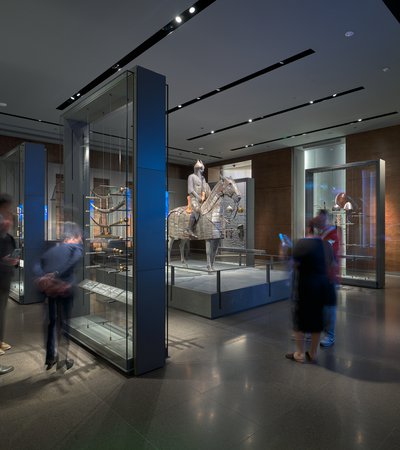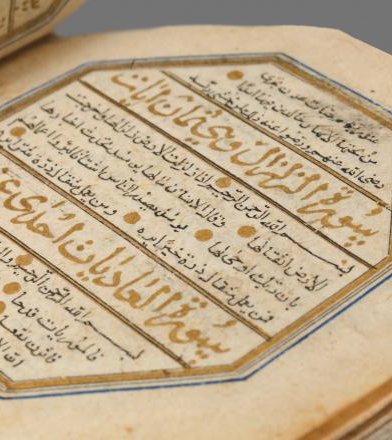MIA’s collection of textiles comprises some of the finest carpets and fabrics from all over the world, including this section of the kiswat al-Ka’ba, a fabric that once covered the Islamic world’s most sacred monument: the Ka’ba in Mecca. Dating all the way back to the late Ottoman period in the mid-19th century, the fabric was likely replaced during an annual ceremony in which a new kiswa is placed over the Ka’ba. This ceremony usually marks the celebration of Eid al-Adha.
An entire kiswa consists of multiple sections of embroidered fabric that are sewn together to cover the Ka’ba. The section known as the sitara, like the one on view at MIA, is the most decorated portion of the kiswa. Shaped into a curtain, it hangs over the doors of the Ka‘ba.
In addition to its spiritual significance, every kiswat al-Ka'ba is also a work of art, with intricate embroidery and design work that reflects the rich cultural heritage of the time and place it was created while also connecting it to the entire Islamic world.
Records show that starting from the Ayyubid period (6th century AH /12th century CE), kiswas were manufactured in Cairo each year and sent as a gift in a mahmal (palanquin) at the head of pilgrims’ processions to Mecca.
